
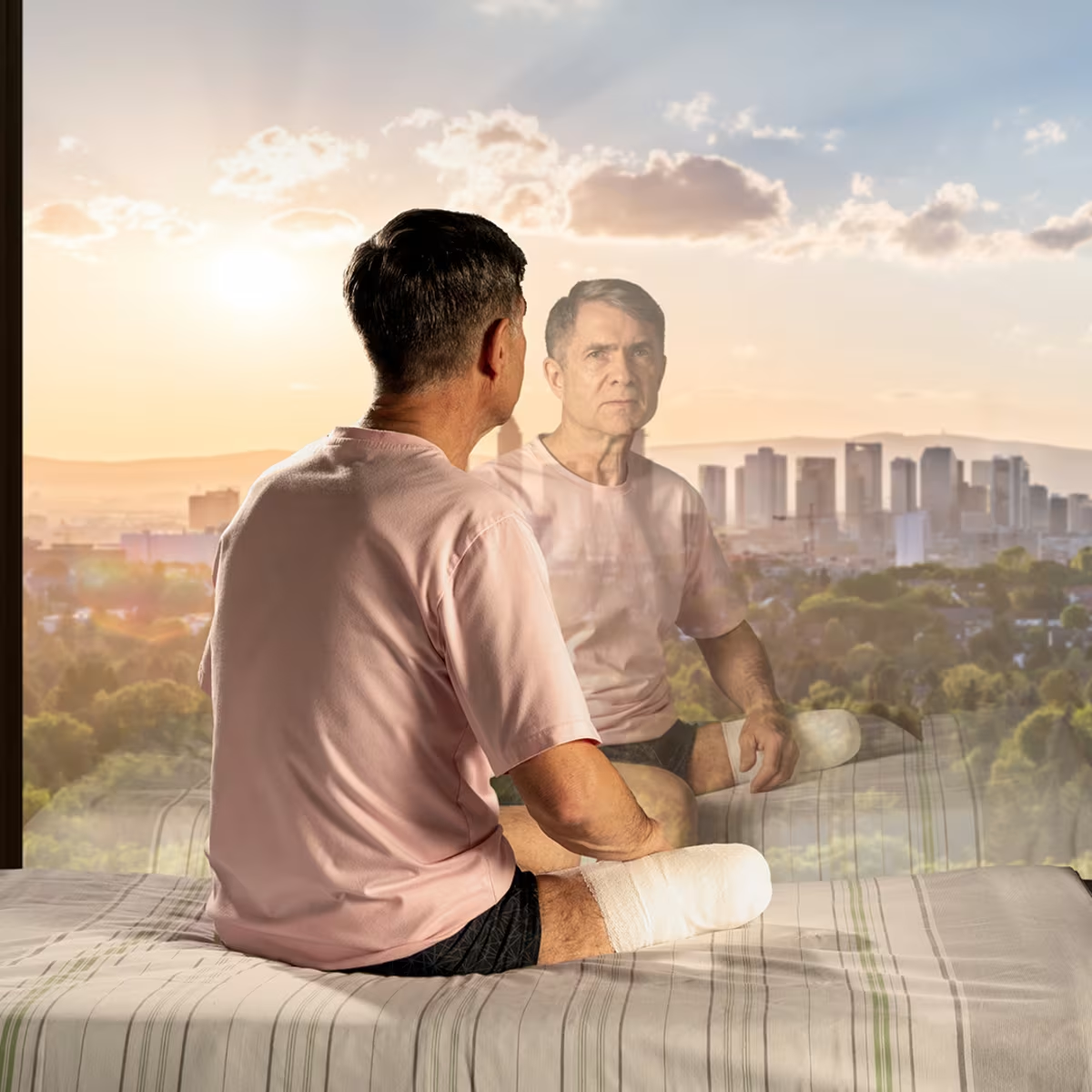
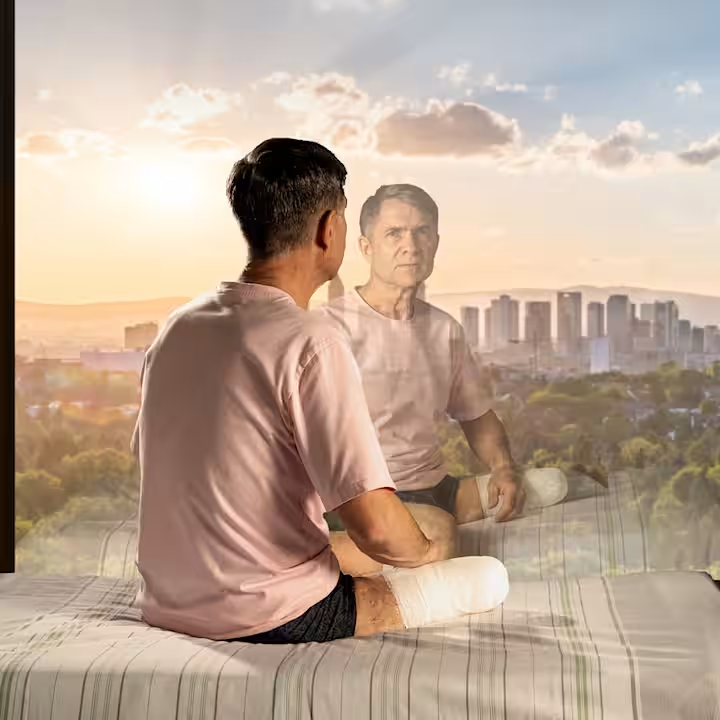
Después de la amputación de la pierna
Lea acerca de la curación residual de los muñones, el dolor fantasma, los ejercicios iniciales después de la amputación y cómo probar una prótesis provisional y definitiva.
Lea acerca de la curación residual de los muñones, el dolor fantasma, los ejercicios iniciales después de la amputación y cómo probar una prótesis provisional y definitiva.
¿Qué te espera después de la amputación?
¿Qué se puede esperar después de una amputación? Después de la operación, su recuperación y la cicatrización residual de los muñones son las principales preocupaciones. Ambos son importantes para que usted pueda comenzar con la rehabilitación y ser equipado con prótesis.
Para iniciar la rehabilitación:
Usted debe tener poco o ningún dolor en el muñón residual
Su muñón residual debe ser capaz de soportar peso
La hinchazón y la retención de agua deberían haber disminuido y estabilizado
Usted debe ser capaz de mover su muñón residual tanto como sea posible en todas las direcciones
Su situación personal determinará cuánto tiempo le llevará llegar a este punto. Sin embargo, usted puede promover la curación trabajando activamente hacia ella. Si bien esto a menudo requiere paciencia y mucha resistencia, vale la pena: cuanto más móvil sea cuando comience la rehabilitación, antes se le podrá colocar una prótesis.
Recomendamos que durante este tiempo después de la amputación en el hospital para elegir un centro de tratamiento ortoprotésico adecuado para su fase de rehabilitación en colaboración con su técnico ortopédico. Nuestra lista de expertos le ayudará a encontrar instalaciones que se especialicen en trabajar con amputados.
Preparación de su muñón residual para una prótesis
La curación de su muñón residual después de una amputación de pierna forma la base para probar la prótesis posterior, lo que lo hace especialmente importante. En el hospital, sus médicos supervisarán de forma rutinaria el proceso de curación, mientras que el personal de enfermería se encarga del tratamiento diario de su muñón residual. Además del tratamiento de heridas, puede incluir edema y terapia de compresión, desensibilización de la piel y cuidado de cicatrices, entre otros enfoques.
Curación residual del muñón
Dolor residual en el muñón
Se pueden presentar varios tipos de dolor en el muñón residual después de una amputación. Estos pueden incluir dolor óseo, dolor de heridas, dolor de nervios o incluso dolor fantasma. Cada tipo de dolor se trata de acuerdo a su causa. Hay varias opciones de tratamiento disponibles, como medicación, calentamiento/enfriamiento o envoltura del muñón residual. Puede hablar con su especialista y/o terapeuta del dolor sobre esto.

Curación de heridas
Cuando se despierte de la anestesia, es probable que su pierna esté envuelta en vendajes simples o un yeso con un pequeño tubo saliendo de ella. Este tubo se inserta en la herida durante la operación para drenar el líquido y la sangre de la herida (conocido como drenaje, que se retira durante la cicatrización). La fase inicial de cicatrización de la herida generalmente se completa dentro de los primeros 14 días, cuando la herida se ha cerrado. Después de esto, las células del tejido conectivo crecen más fuertes y se convierten en tejido conectivo específico. Pero incluso si la cicatriz parece haberse curado y solo el color del tejido cicatricial cambia ligeramente a partir de ese momento, el proceso general de cicatrización de la cicatriz toma mucho más tiempo. Puede tomar hasta un año y medio antes de que se cure por completo debajo de la piel. La duración del proceso de curación de la herida depende de su constitución individual.

Oedema therapy
After the operation, the tissue around the residual limb will usually swell up at first. This swelling (oedema) is a normal reaction to the operation. It usually subsides after about one week. Only a loose wound dressing is applied until the sutures are removed. No pressure can be applied to the residual limb at first.
The circumference of the residual limb should be measured regularly to evaluate how the swelling is going down. The same measuring points always have to be used for this, and the results must be documented on measurement forms. If this isn’t done, the results are not comparable with each other and there is no way to tell whether the swelling is decreasing.

Desensitising the skin
The skin on your residual limb is very sensitive following the operation. You can help desensitise your skin by working closely with your treatment team — and with your therapist. One example is gently rolling a rough towel or washing mitt over the sensitive skin. You can also lightly massage the residual limb with a brush using an upward motion. Using a massage ball with nubs helps make the skin less sensitive as well. Make sure to only do all of this in close coordination with your treatment team. They will also show you the proper techniques.
Cuidado de la cicatriz
Por lo general, la incisión de la operación en el muñón se cierra después de tres a cuatro semanas, y queda una cicatriz. Aunque por fuera esté bien curada, puede ocurrir que el tejido de la cicatriz subyacente aún no haya sanado por completo. Esto puede llevar hasta 18 meses. Consulte con su médico o con el personal de enfermería cómo cuidar correctamente la cicatriz. Es recomendable humedecer la cicatriz directamente después de la operación. Su terapeuta le mostrará cuál es la mejor forma de limpiar y masajear la piel, ya que, cuanto más blanda y flexible esté, mejor preparado estará el muñón para utilizar una prótesis.

Causes of phantom pain, types and therapy options
Many people are affected by phantom pain, which means pain in the limb that was amputated. Experts believe that up to 70 per cent of all amputees experience this, temporarily in most cases. The psychological strain is sometimes very high for affected individuals. There are various theories regarding the causes of phantom pain. Nevertheless, various and also promising therapy options are now available. Unfortunately, there is no treatment that helps everyone equally. We want to inform you about possible causes and the various therapy options here. In any case, talk to your O&P professional, therapist or doctor. They will work with you to find solutions that give you relief.

Causes of phantom pain
Experts have various theories regarding the origin of phantom pain. One of the most common ones is that different areas in the brain are responsible for different body regions. When a body part is missing and doesn’t produce any feedback anymore, the brain interprets this lack of a signal as pain. In this context, it’s interesting to note that people with a congenital limb difference, known as dysmelia, do not experience phantom pain as often. This suggests that there is a sort of “learning effect” in the brain. Pain memory appears to play an important role as well. If the patient was already experiencing pain before the amputation, this can affect the development of phantom pain and should also be taken into account in selecting the therapy.
Types of phantom pain
Phantom pain is very individual and depends on many factors. It affects individuals with leg or arm amputations equally. The pain may be triggered or intensified by certain types of weather, exposure to cold temperatures or emotional stress. It may occur only at certain times, gradually decrease or increase, or always be present. The type, intensity and characteristics of the pain can differ as well. Affected individuals describe pulling and piercing or burning and cramp-like pain.
Phantom pain is different from phantom sensations, feelings in the lost limb that are not painful.
Therapy options for phantom pain
Various kinds of pain may occur in the residual limb after an amputation. It is important to differentiate between residual limb pain and phantom pain, since these types of pain are treated differently.
There are many different therapy approaches for both types of pain. Combining several types of therapy is recommended for phantom pain. There is no standard therapy that helps all affected individuals. Furthermore, many therapies are of a long-term nature and require the active participation of the affected person. You may need a great deal of patience and endurance. But we can only encourage you to do the therapy, even if it is challenging. Be sure to talk to your doctor, O&P professional and therapist. They will work closely with you and support you to the best of their ability. The following methods are suitable means of therapy for phantom pain after an amputation and complement each other
Mirror therapy: sitting in front of a mirror, the patient’s sound limb is reflected with the help of mirrors. This makes it appear as though the amputated limb is there again. Known as the phantom limb, it can now be moved purposely via the sound side and therefore influenced. This makes it possible to release the phantom limb from cramped and painful positions with the help of movements by the sound side, moving it into a more comfortable, pain-free position. Comparable results can be obtained by looking at photographs (known as lateralisation training). This is intended to practise right/left memory.
Sensorimotor therapy: massaging the residual limb with various materials stimulates nerves via the skin. Ultrasound, thermal or electrotherapy can be used here as well.
Wearing a prosthesis or liner: for many affected individuals, pain is alleviated by wearing a prosthesis or liner. This may be due to sensory stimulation of the residual limb as well as the idea that, with a prosthesis, the body part is still there so the brain is receiving corresponding feedback.
Pain therapy: a pain therapist is a doctor specialising in the treatment of pain. Your doctor will put you in contact with such a specialist. It’s important that you do not try to treat yourself with pain medication in any case.
Residual limb pain
Residual limb pain and phantom pain are different types of pain and are therefore treated differently. For this reason, it’s important that you are thoroughly examined in order to determine whether you are experiencing phantom pain or another form of residual limb pain. Residual limb pain can also be caused by a poorly fitting prosthesis. Medical examinations help clarify whether you may have bothersome scar tissue, painful residual limb neuromas, inadequate soft tissue coverage or excess soft tissue. These causes of pain can be eliminated on a long-term basis by adapting the components or via another surgical intervention.
Certain operating techniques can also help reduce residual limb pain and especially the pain originating from some nerves in the residual limb after the amputation. If possible, preventive pain therapy should commence during the operation with a local anaesthetic or begin directly after the operation to prevent the onset of pain or the development of chronic pain.
Stay mobile
Even while your residual limb is healing, you can prepare for the stay in a rehabilitation centre by doing specific exercises. Talk to your doctor or physiotherapist and ask them to show you some important things: the proper position in bed so that the muscles and the joint closest to the residual limb do not shorten or stiffen, regular breathing exercises and light movement and mobilisation exercises, which also help stabilise the circulatory system. These measures help ensure that your treatment with a prosthesis is fast and straightforward so you can stay mobile and active.

How do I find the right rehabilitation facility?
After being released from hospital, your care will usually continue in a rehabilitation centre. The goal here is to prepare you for everyday life with a leg prosthesis. In order to use this time to best advantage, you should definitely choose a rehabilitation centre with experience in the rehabilitation of amputees.
The more experience a rehabilitation facility has, the better it will be able to meet your needs. As a general guideline, a centre should have at least 50 patients per year. Ask the rehabilitation centre you are considering about the number of patients they treat.
Talk to your O&P professional – they can also help you make the right choice.
Your doctor will tell when it would be useful to visit a rehabilitation centre and whether inpatient or outpatient rehabilitation is appropriate in your case. All of this depends on numerous factors, such as your healing progress and how adequately you can prepare yourself at home.

The process of getting a prosthesis
After your amputation, you will have many urgent questions: When will I get a prosthesis, how do I get a prosthesis and which prosthesis will I get? We want to provide you with all the details about the next steps here.
Generally speaking, your prosthesis fulfils numerous functions: On the one hand, it restores your mobility to a large extent. By wearing a prosthesis, you also reduce or avoid posture problems and balance disorders that could result because of the missing weight of the amputated leg. It also prevents your sound leg from being overloaded, which could result in problems over the long term. Talk to your O&P professional right after the amputation. They can explain the process leading up to your fitting with a prosthesis. Please note that many factors determine when you get a prosthesis and whether you are first fitted with an interim (temporary) prosthesis. Your O&P professional can give you detailed advice.

Suscríbase al boletín de noticias de Ottobock
Manténgase al tanto de todas las cosas ortésicas y prótesis, nuevos lanzamientos de productos y perspectivas motivacionales.
Further information

Antes de la amputación de la pierna
Infórmese sobre lo que sucede antes de una amputación planificada y cómo puede prepararse.
Infórmese sobre lo que sucede antes de una amputación planificada y cómo puede prepararse.
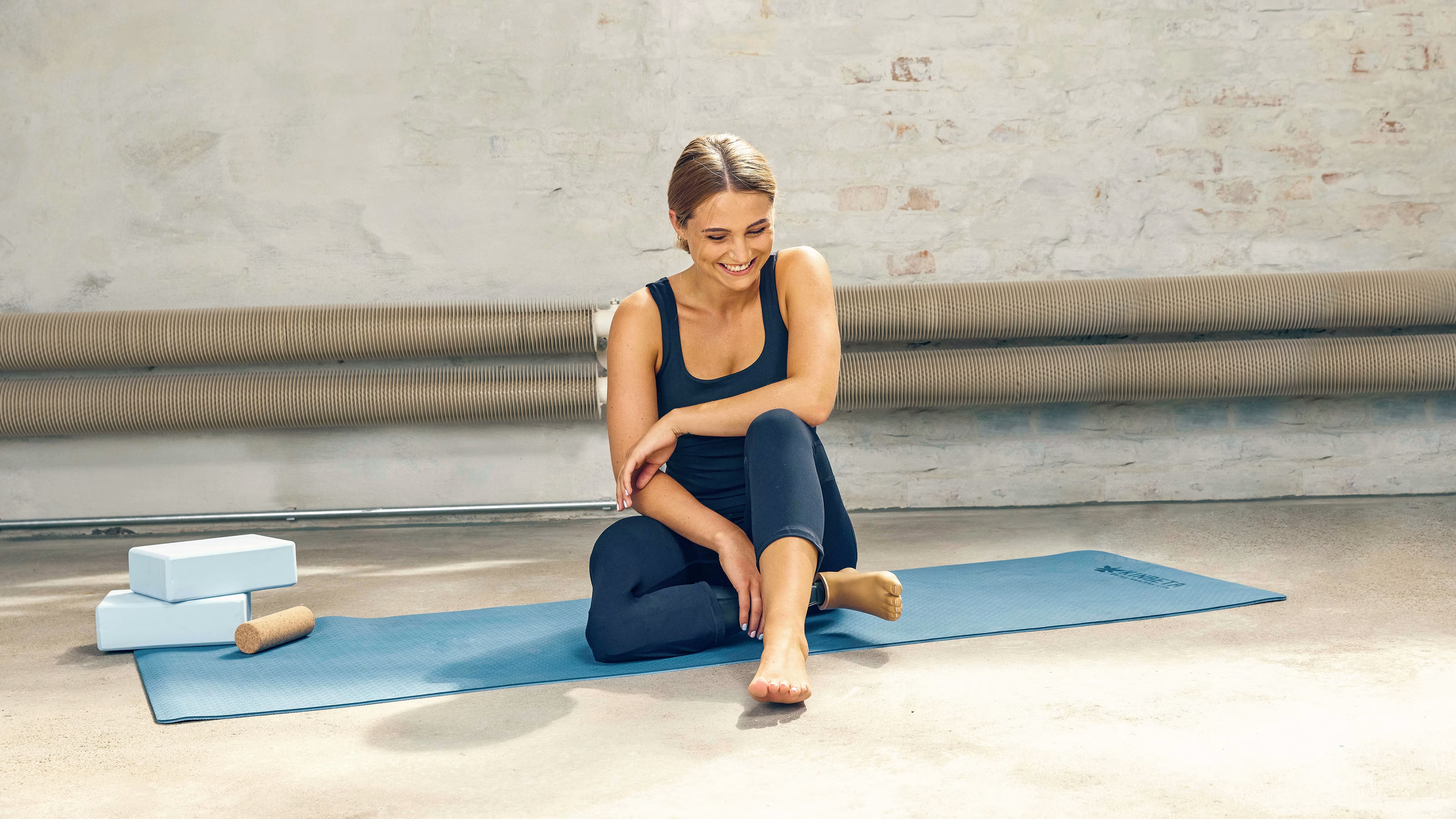
Rehabilitación y prótesis de pierna
Descubra información detallada sobre el cuidado del muñón residual, el manejo de prótesis y el entrenamiento de la marcha para una vida con una prótesis de pierna.
Descubra información detallada sobre el cuidado del muñón residual, el manejo de prótesis y el entrenamiento de la marcha para una vida con una prótesis de pierna.
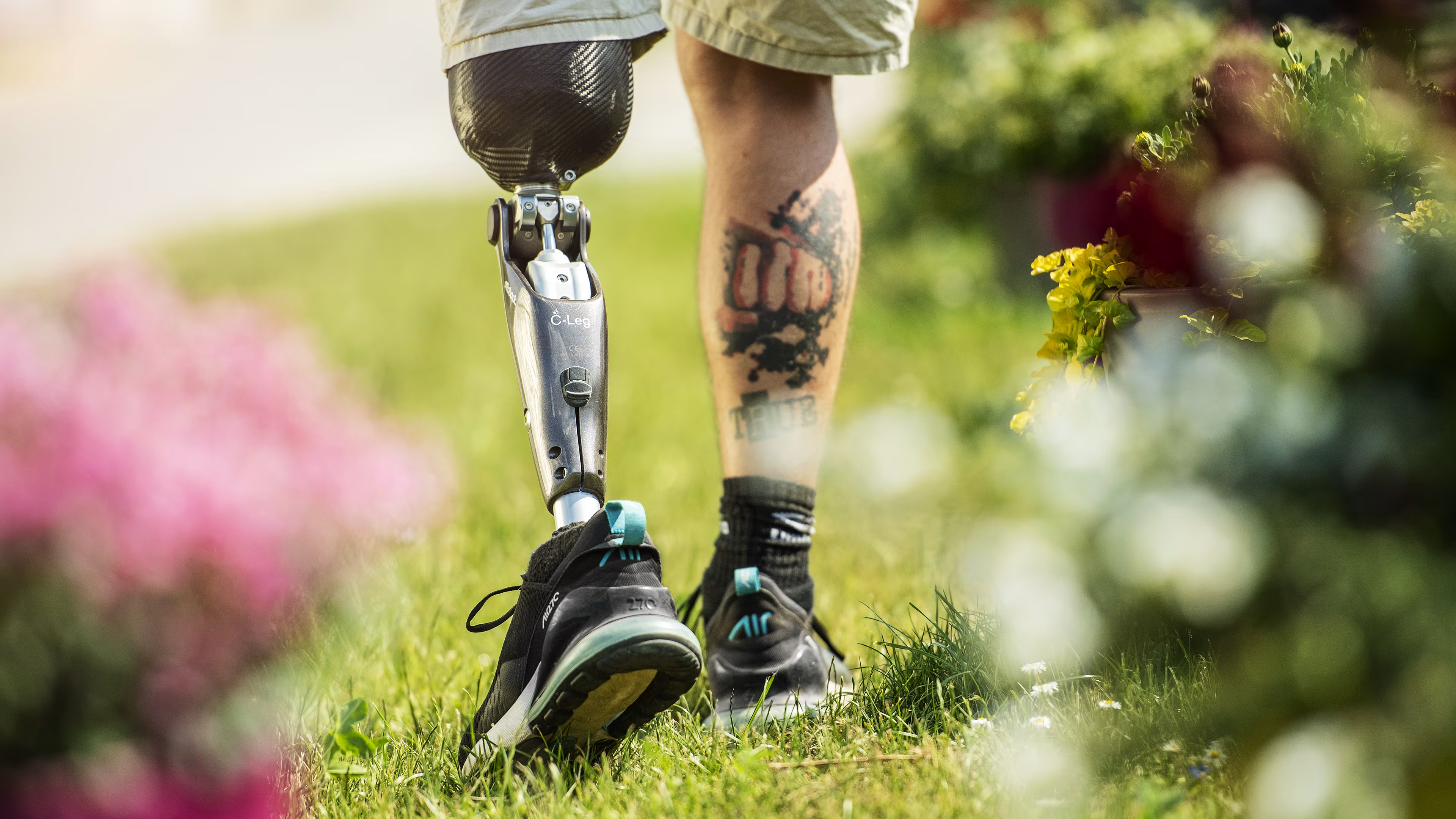
Piernas protésicas
Descubra cómo las piernas protésicas ayudan a las personas a recuperar su movilidad, recuperar su confianza y volver a explorar su mundo.
Descubra cómo las piernas protésicas ayudan a las personas a recuperar su movilidad, recuperar su confianza y volver a explorar su mundo.
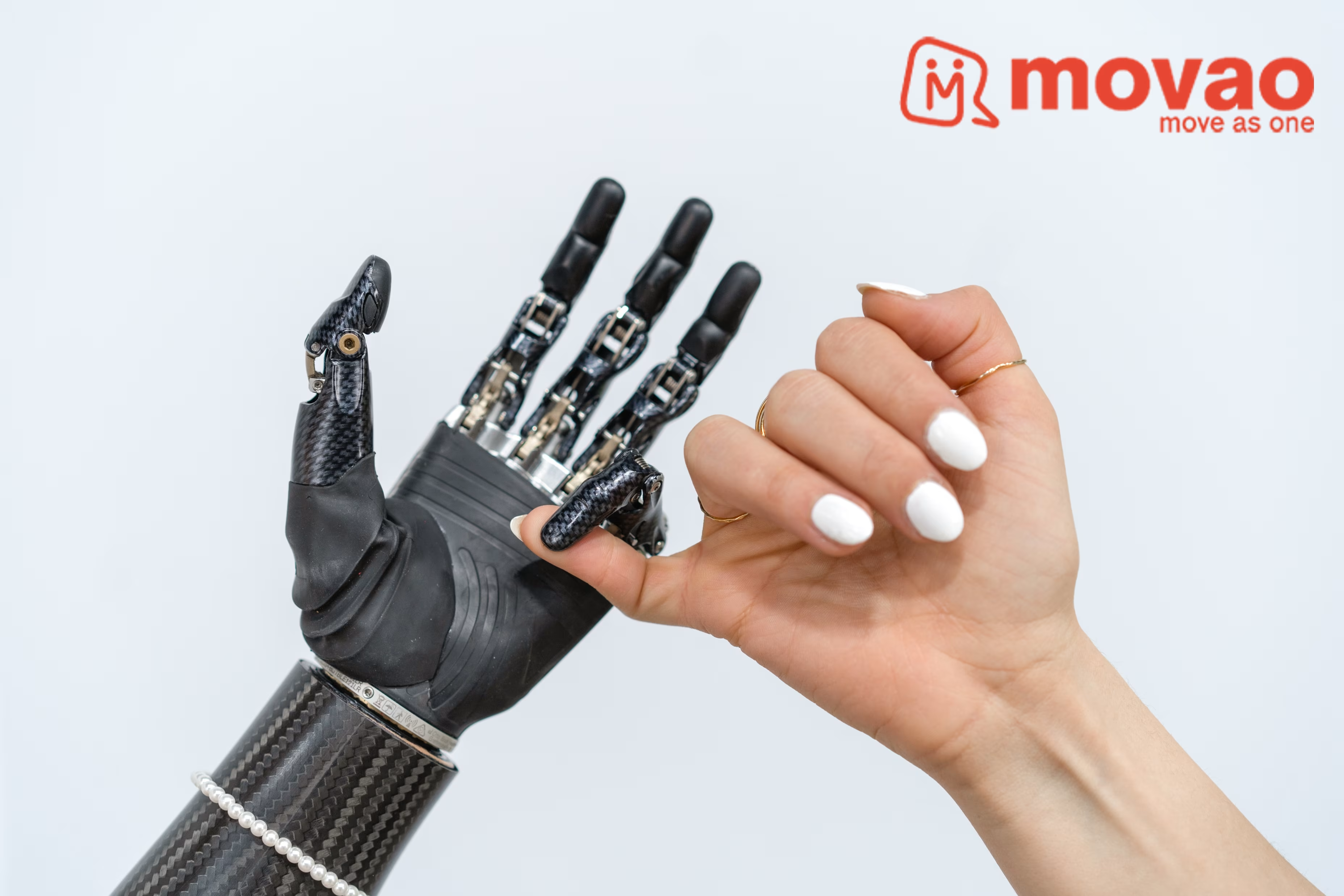
MOVAO – Moverse como uno
MOVAO está aquí para que todas las personas con amputación, incluidos sus amigos y familiares, se unan a la comunidad y se conecten con personas de ideas afines en todo el mundo.
MOVAO está aquí para que todas las personas con amputación, incluidos sus amigos y familiares, se unan a la comunidad y se conecten con personas de ideas afines en todo el mundo.

Thai Chi para amputados
Desde principiantes hasta profesionales: explore la serie de ejercicios de Tai Chi para entrenar en casa.
Desde principiantes hasta profesionales: explore la serie de ejercicios de Tai Chi para entrenar en casa.

Prótesis
Las personas con diversos tipos de diferencias de extremidades y pérdidas de extremidades dependen de una prótesis para apoyar su movilidad. Infórmese sobre los diferentes tipos de prótesis, cómo funcionan y qué ofrecen.
Las personas con diversos tipos de diferencias de extremidades y pérdidas de extremidades dependen de una prótesis para apoyar su movilidad. Infórmese sobre los diferentes tipos de prótesis, cómo funcionan y qué ofrecen.







